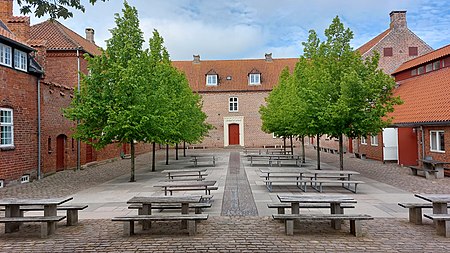Ribe Katedralskole
Cathedral schoolsRibeSchools in Denmark

Ribe Katedralskole is a cathedral school in the town of Ribe, Denmark. The school was first mentioned in 1145, making it one of the oldest schools in the world. The oldest building still in use, Puggård, is from the fourteenth century. Except for churches, this is the oldest Scandinavian building still used for its original purpose. Today the school is an independent school functioning as a modern high school (Danish: Gymnasium og HFkursus).
Excerpt from the Wikipedia article Ribe Katedralskole (License: CC BY-SA 3.0, Authors, Images).Ribe Katedralskole
Puggaardsgade, Esbjerg
Geographical coordinates (GPS) Address Nearby Places Show on map
Geographical coordinates (GPS)
| Latitude | Longitude |
|---|---|
| N 55.326408333333 ° | E 8.7604333333333 ° |
Address
Puggaardsgade 22
6760 Esbjerg
Region of Southern Denmark, Denmark
Open on Google Maps









